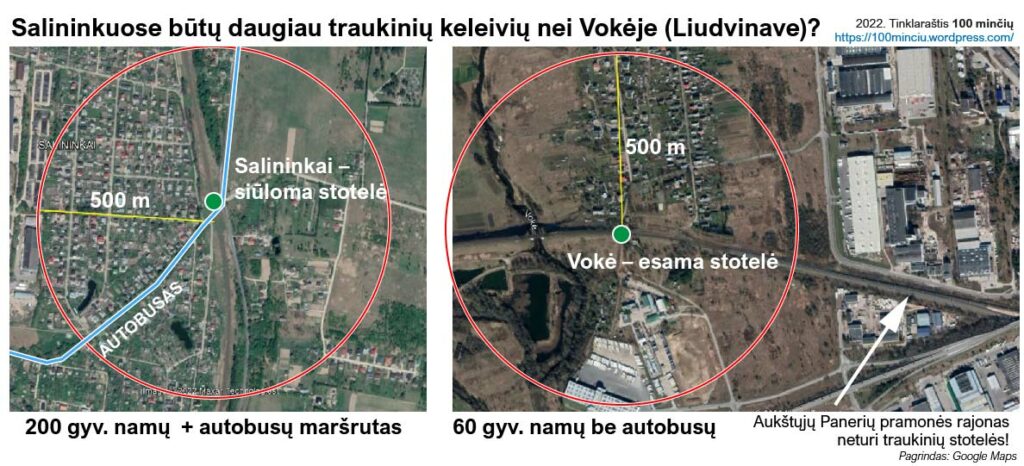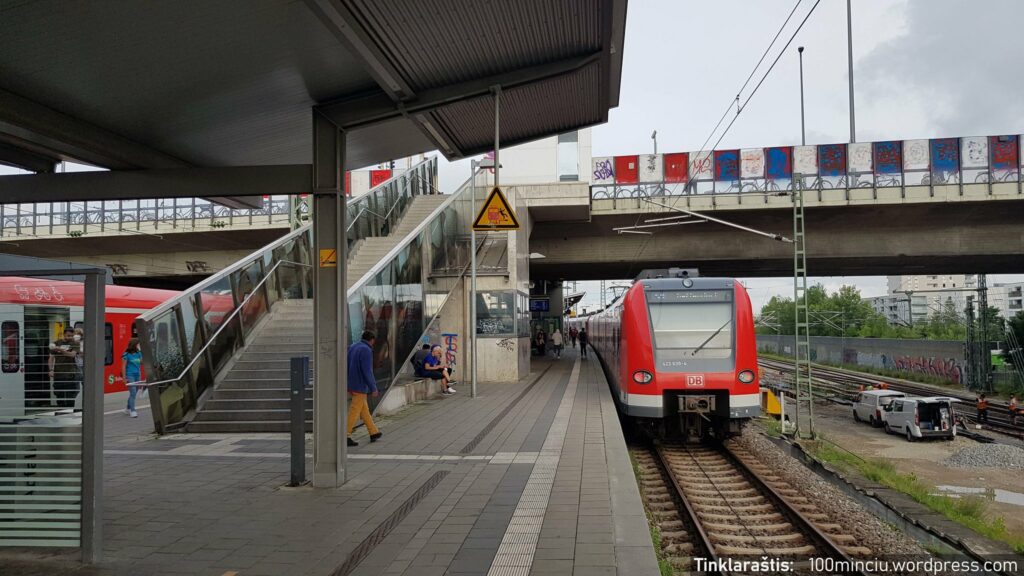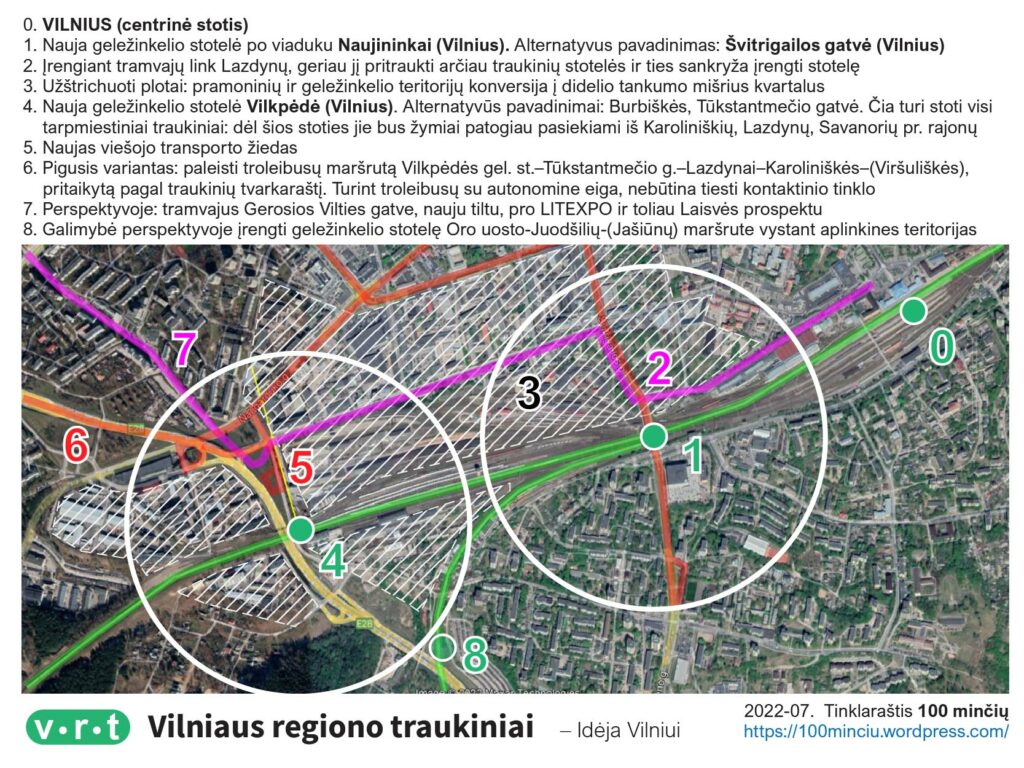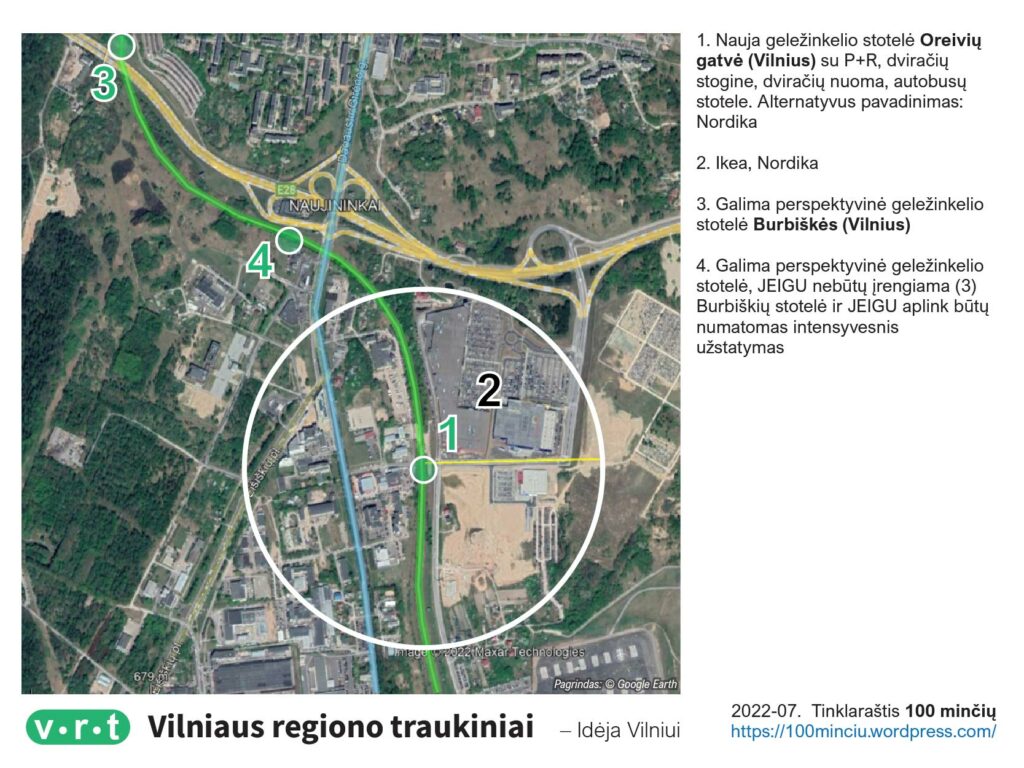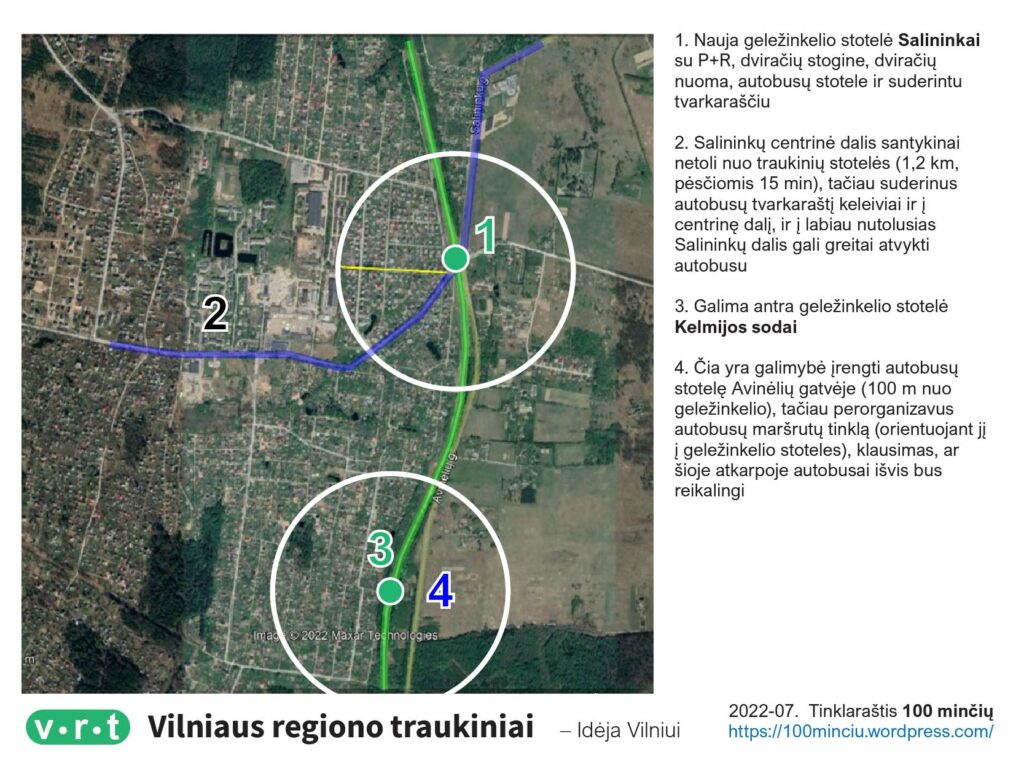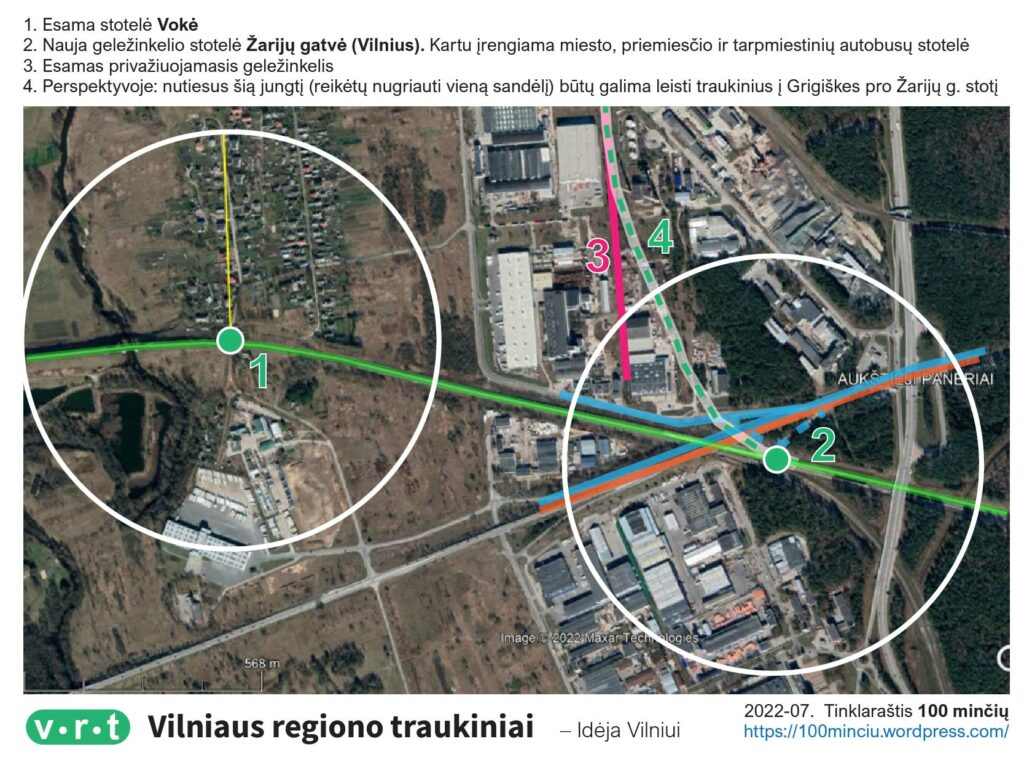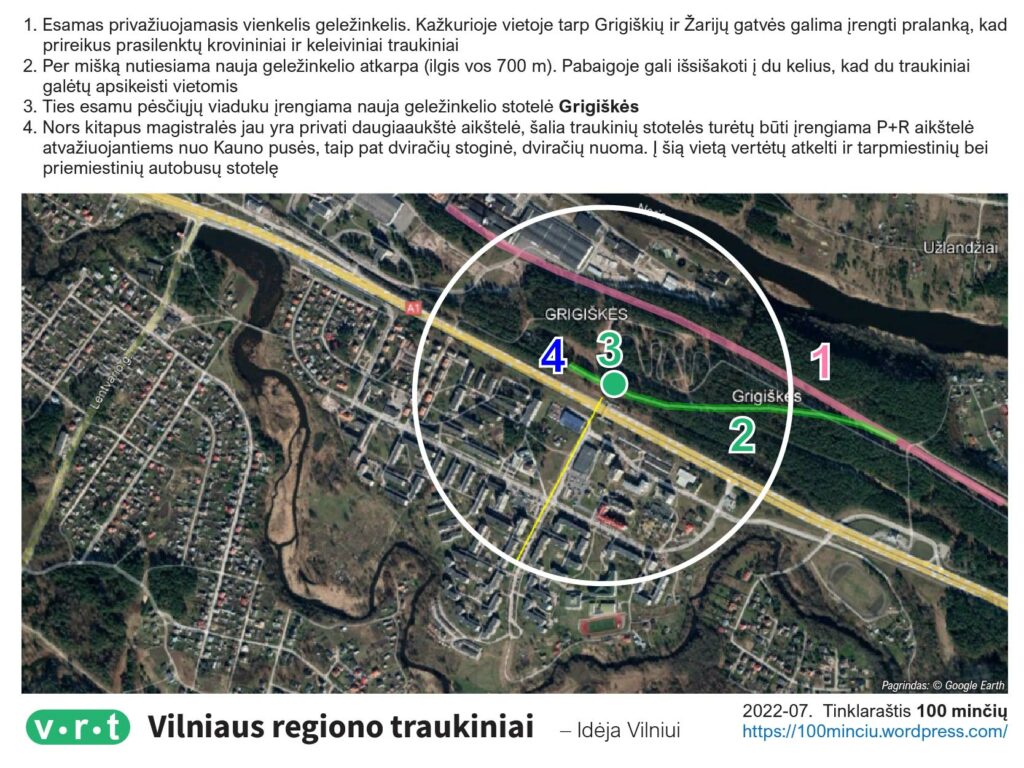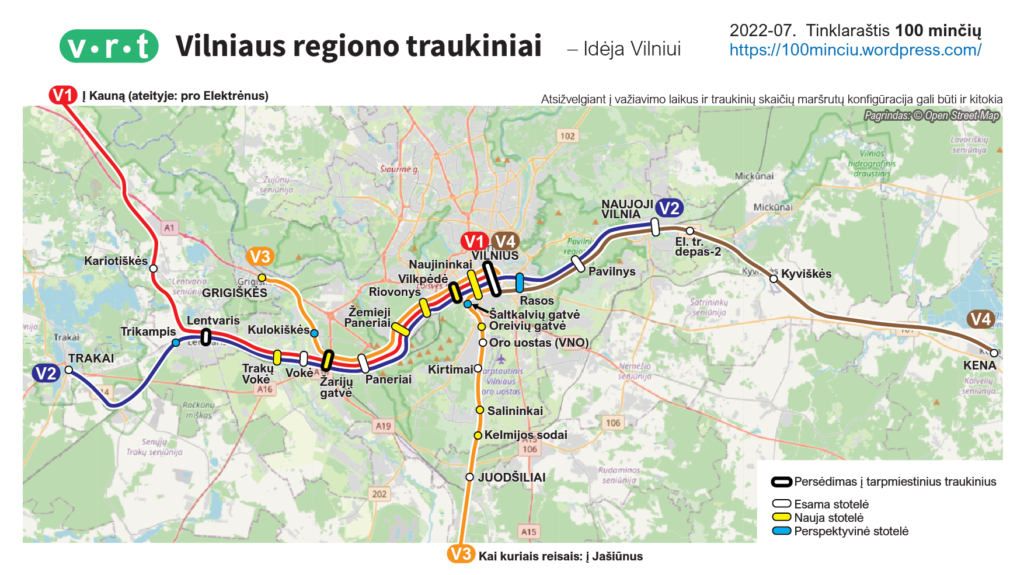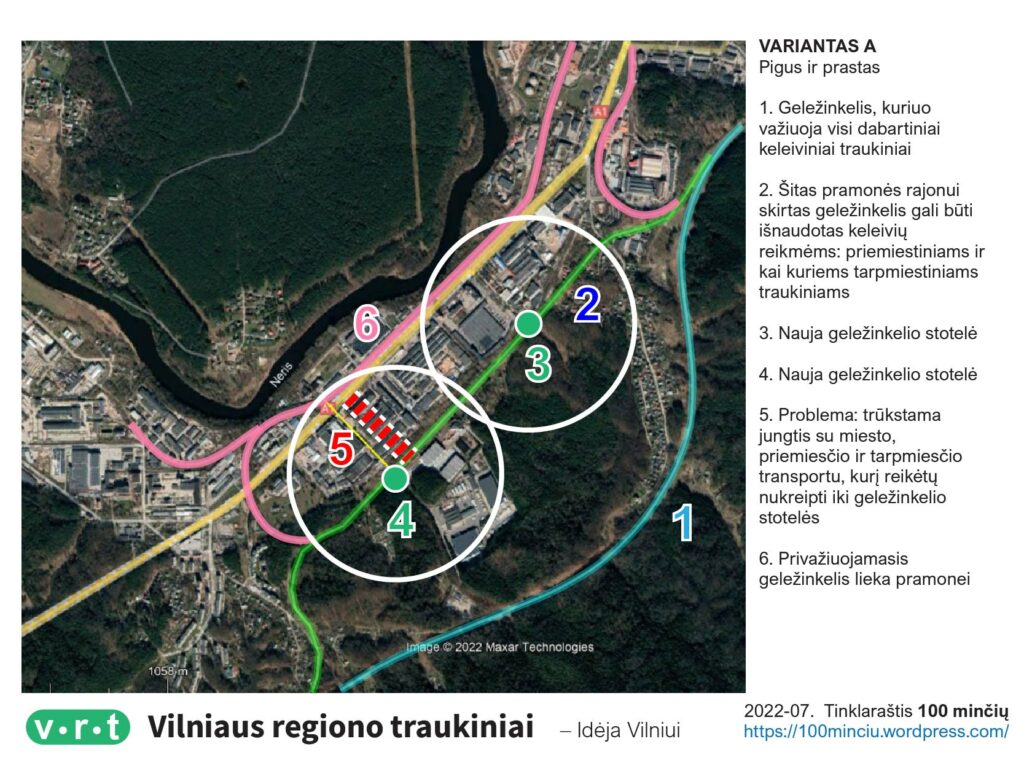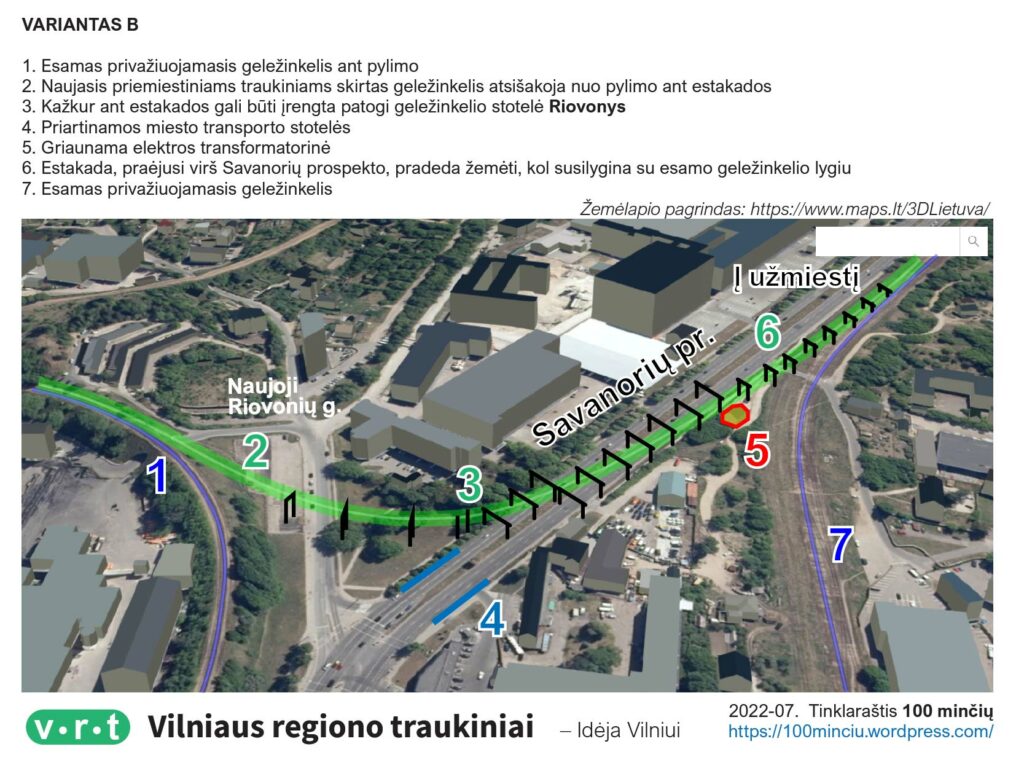Today's article will be devoted to another topic that people do not even dare to think about. This Vilnius and trains. There will be lots of pictures and specific suggestions.
It is understandable that the problems of inner city communication are the most eye-popping at the moment. However, considering the tram or subway often we forget the railways that already exist and train routes. Even if we significantly improve the inner city transport with a new type of transport, but leave the current situation with trains and railways, this would be a big mistake in city and regional planning.
The development of a normal European urban transport system is inseparable from the utilization of available railways for urban and suburban needs.
Why is it important to understand this? Because Vilnius and the state make absolute ZERO, to exploit even the existing potential of the railway, let alone the future (or rather: potential potential, if one had the brains to do so). Therefore, it is time to think.
1. Why use the railway?
This is the most powerful communication possible. Trains can transport such masses of people that would clog even the widest highways if they sat in cars. Trains are energy efficient, pollute nature less, use less space (!). Railway lines channelize/concentrate traffic flows.
This is why high-density development is allowed abroad near train stations: so around the station concentrated workplaces, housing that is perfectly accessible by train. Frequent commuter trains create a connection between the center of a big city and different parts of that city with towns in the region gaining momentum for development. Dozens of city districts and towns are connected by convenient transportation like a necklace of beads.
2. The current situation is deplorable
Let's take a look at what has happened in train communication over the past 30 years and ask ourselves some control questions.
- Is it possible to travel by train within Vilnius using a Vilnius card? NO.
- Are there any new train stops (apart from the miraculous Airport stop in 2008-2009)? NE.
- Are there comfortable shelters, bicycle parking, bicycle rental, car P+R parking lots at the existing stops? NO.
- Are buses and trains combined (e.g. a bus stop is located next to a train stop, transfer is coordinated, schedule)? NO.
- Is there even one route in the suburban routes, the intervals of which are more or less regular and not 2-3 hours. spaces? Practically NE: for example, the train goes to the airport only 5 times a day, and to Traki - 8 times at irregular intervals. Even from of the station to Lentvaris, where the most routes overlap, there is a 65-minute gap between 17:50 and 18:55 after work!
Conclusion - no progress!
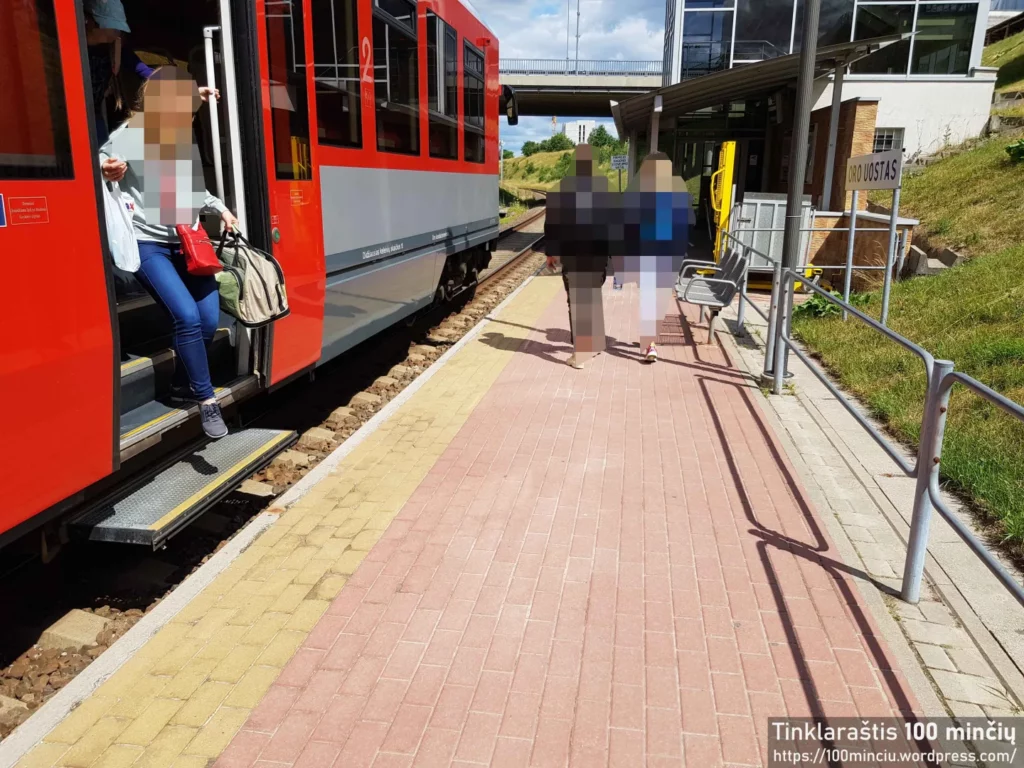
3. Is the situation in Vilnius really unique?
The main argument why nothing is done and nothing is even worth doing, as always, is "everything is different here." Allegedly, the railway in Vilnius passes through sparsely populated areas. This is partly true, we can't even compare with Riga and Tallinn, because not only are the residential areas more closely connected to the railways, but also the railway networks of the whole country are concentrated in the capitals, the routes overlap with each other, and there is a smaller interval.
But that's no excuse 30 years of not making any improvements (except for the installation of an airport stop) and having no plan for the future of how the city should develop along the railways, no plan for improving train connections.
Our infrastructure is still in the Tsarist era. For example, the Vokė railway station, built probably a hundred years ago, still exists today, although there are only 500 residential houses within a 60 m radius (Figure 2):
Meanwhile, in Salininkai, a new stop can be installed at one crossing, around which there are 200 residential houses in the same radius and there is also a bus route that could be coordinated with trains - there would be significantly more passengers.
Thus, even with the existing layout of the railways, it is possible to increase the filling of existing routes, reduce car traffic and otherwise generally improve the transport situation.
4. "Vilnius Connect" error
One may get the wrong impression that the only potential of the Vilnius railways is just a few new train stops, which would only be useful for people living near the railway. In fact, the potential is much higher if we consider the areas near the central station.
As you know, according to the "Vilnius Connect" project, it is planned to reconstruct the Vilnius station and build part of the tracks. Unfortunately, as far as I could see, this project does not consider the possibility of installing new railway stations.
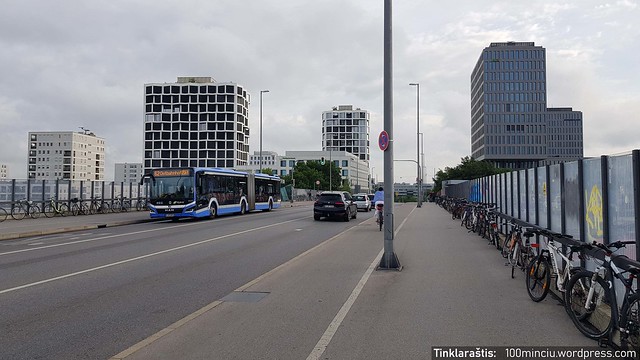
Those new rail stops are needed to ensure that both existing and new neighborhoods have excellent rail connections. Around the railway there are huge industrial areas, which sooner or later will turn into dense mixed neighborhoods. They have a total of about 110 hectares. So why can't we develop these areas by orienting them to the new train stations? Abroad, it is out of the question that the new quarters that appear next to the railway remain without train connections!
In addition, new stops would be a significant improvement public transport network in case of congestion. In Europe, it is unthinkable not to have a normal and convenient transfer at a place where important public transport corridors intersect. In Vilnius, there are places where express bus routes cross, but there is no transfer - at the Ozo-Ukmergė intersection, at the Kalvariju-Europa intersection (where I proposed to install a convenient hub - Lviv station). Therefore, where the railway intersects with the existing transport, a node is needed - that is, on the viaduct of Švitrigailas street. It might look like this:
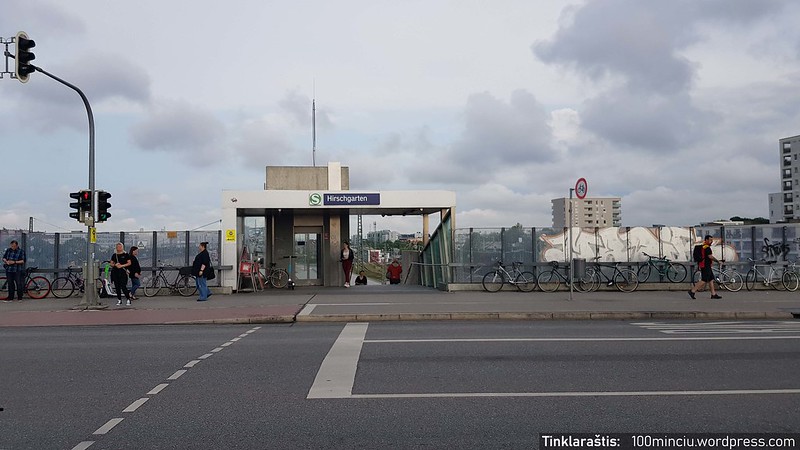
The second stop would be at Tukstantmečio Street, where all intercity trains would stop. After installing it, we would "bring closer" intercity trains to Naujamiestis, Savanorių Ave. blocks, Lazdyņi (for them, the journey to the train would be reduced by about 10-15 minutes)! Thus, more passengers would choose not only suburban but also intercity trains.
You can see everything summarized in this diagram (Figure 6, click to enlarge). The radius of the circles is 500 m, which is approximately the optimal walking distance of the stations.
5. Connection of Aeromiestel, Nordika and Ikea
Let's drive to the airport. A stop can certainly be installed at Ikeja and Nordika - maybe not so much because of these shopping centers, but more because of the various office buildings that are rapidly sprouting up in the new "Aeromiesteli". See the notes in the image:
6. Connection of islanders
Let's go even further. After passing the Airport and Kirtimi stations, you will find Salininkai - a large residential area with former garden communities. It doesn't have a single stop! I have already indicated one favorable place earlier, but you can immediately install a second one:
7. New transport hub on Žariju street
Now let's move back to the aforementioned Vokė, near the Aukštėių Panerėi industrial district. The railway crosses a large industrial area and an important road (Galves street) along which it runs many intercity buses as well as city and suburban buses. By installing a stop here with a transfer point, we would shoot a few bunnies - and the workers of the industrial district would be able to use the train (to Lentvaris, Trakus, Vilnius, etc.), and there would be a transfer between all types of buses and the train!
As you can see in the diagram, if, after demolishing one warehouse, we connect the trunk railway with the inner railway of the industrial district, in this new at the station trains going to Grigiške could also stop.
Grigiškii trains
Yes, you read that right. Passenger trains could certainly run to Grigiške.
At first glance, a separate train route to Grigiške seems like too much luxury. However:
- About 10 inhabitants live in Grigiškės.
- Connecting Grigiškii to the network of passenger routes is not technically difficult.
- Grigiškės would have a direct connection with the station (=old town). Now buses with one transfer take 35-50 minutes, while a direct train would take 20-22 minutes. (according to the current timetables, Stotis-Vokė 12 min. + 8 min. from Žarijju St. to Grigiškii, driving at a speed of only 50 km/h).
- Grigiškės would not only have a direct connection with the central station, but also Vilkpėda, Naujininkai (Vilnius Connect territory), where it would be possible to conveniently transfer to buses/trolleybuses, if the destination is not right next to the railway.
- Grigiškės would get a convenient connection with intercity, suburban buses and intercity trains. I.e. At the Žariju street station, which can be reached from Grigiškii in ~8 minutes, you can change trains going to Traki, Kaunas, Klaipėda, Varėna (Druskininki?) and elsewhere!
As you can see, the passenger route to Grigiške seems nonsense and luxury only if we do nothing everywhere else: no new stops, new interchange nodes, more frequent schedule... However, if we do a complex project and install all other things, then connecting Grigiškii seems completely logical and contributing to the overall goal - to move transport from streets to rails and ensure a convenient VT network. If we started to install Vilkpėdes, Naujininkai, Oreivių gatvės, Salininku stations, Žarijės gatvė junction with intercity buses and trains stopping there - seeing such excellent communication in those places, the modern environment, the citizens of Grigiški themselves would start asking to connect their district to the network of passenger routes.
For the Grigiškii route, the most suitable interval would probably be 30 or 20 minutes (strictly tactical schedule!).
9. Route network
So what would that network look like? Here's my initial take:
Existing "ordinary" routes would be upgraded to "commuter route" level by making them more frequent, possibly using separate branding: for example, a sign would appear vrt - Vilnius region trains, and route numbers would be marked V steep.
V1: all "slow" trains Vilnius-Kaunas would be marked V1 on a route with an interval of no more than 60 minutes, making a loop in the future through Elektrėni.
V2: The Trakai route is extended to N. Vilnius. At least every 60 minutes. I have already made a basic schedule In the Lithuanian tact article.
V3: The Grigiškii route could be connected with the Juodšilii/Jašiūnai route! The change of direction would take place at the central station. Such a route would create a direct link to the south-east. I.e. a direct route would appear in Grigiškės<>Airport, Juodšiliai<> tripsWolffoot etc. At least 30 minutes, with the possibility of compaction up to 15 minutes. to the airport. Because after the implementation of Rail Baltica, if I am not mistaken, the connection between the Station and the Airport will take place every 10 minutes. (not by a separate shuttle train), it would take 3 minutes for the V30 route. interval.
V4: maybe this unprofitable route Vilnius-Kena can be somehow combined with other routes. Intervals should still be as regular as possible.
Of course, trains of other routes, such as Vilnius-Varėna, Vilnius-Turmantas, Vilnius-Klaipeda. So, even if the "V" routes would initially run infrequently, other routes may plug some holes in the timetables. However, in order for trains to run not only at regular intervals, but also to allow various transfers, it is best to gradually implement them nationwide tactical schedule. Even Latvija already planned the tactical schedule.
10. The historical chance of Lower Paneriai
We are nearing the end. The last important thing in the complex Vilnius region trains in the project - the connection of Lower Paneri. There are quite a few jobs here. In addition, it should be kept in mind that the Lower Paneris is intended to be converted into a residential/mixed area in the future. The traffic is still good, the place is near the river and the forest. Therefore, just as in the case of Vilnius Connect, it is necessary to create a good passenger connection and to orientate the new quarters to new railway stations!
However, now all passenger trains bypass Ž. Paneriai district is a forest. Therefore, they need to be passed through the loop through Ž. Panerius to have railway stations there. Here's the cheapest way to do it:
But there is a problem: city and intercity transport does not bind with the railway, because the railway does not reach Savanorių avenue. The city's public transport (including trolleybuses) should be brought to the train station. It would not always be convenient/useful to stop for intercity buses.
However, there is also a more expensive, but more perfect option, how to pass the loop through the Lower Paneris! For this, the already existing tracks running parallel to Savanorių Avenue should be used:
Result: it would be possible to install even two train stops in very convenient places - at the intersections with Savanorių prospekt. This means: both stops have full integration with the city's VT, and stop number 3 (near Vaduva st.) also with suburban/intercity buses. Already now Vaduva st. is kind of a VT transfer hub, but imagine how it could improve with a train stop, P+R area, bikes, comfortable passenger sheds with minimal walking distance and the like.
Of course, such an option would require a new railway trestle, which could look like this:
In summary, both loops (options A and B) would cost a little, since those sections of the railway would need to be electrified, as well as a second track in some places. A route could then run through these loops Trakai-Vilnius-N. Vilnius (V2) and Kaunas-Vilnius (V1). However, it should be remembered that in the future, Zemieji Paneriai will gradually be converted, tens of thousands of people will live and work here. Such a serious investment in the future dense part of the city will definitely pay off (it would be possible to immediately limit the installation of parking spaces).
It would be possible to easily and quickly reach Lentvaris, Trakis, Vievis, Elektrėnis, Kaišiadoris, Kaunas, Vilnius center, Vilnius airport by train from Žemių Panėrii without changing trains... In order to get on the Šiauliai/Klaipėda or Warsaw/Riga train, you can change at Vilnius Central Station.
Now, the journey from Vilnius station to Žemių Paneri on the 15-tu trolleybus takes about 25-30 minutes, and after implementing the loop I mentioned, the journey by train would take only 8-12 minutes!
11. The final touch - Trakai Envelope
For dessert, let's return to Vokė again. Nearby, next to the railway, is the developing suburb of Trakai Vokė, which even has a tourist object - Trakai Vokė Manor. It is simply necessary to install a train station here, with a bus route leading to it:
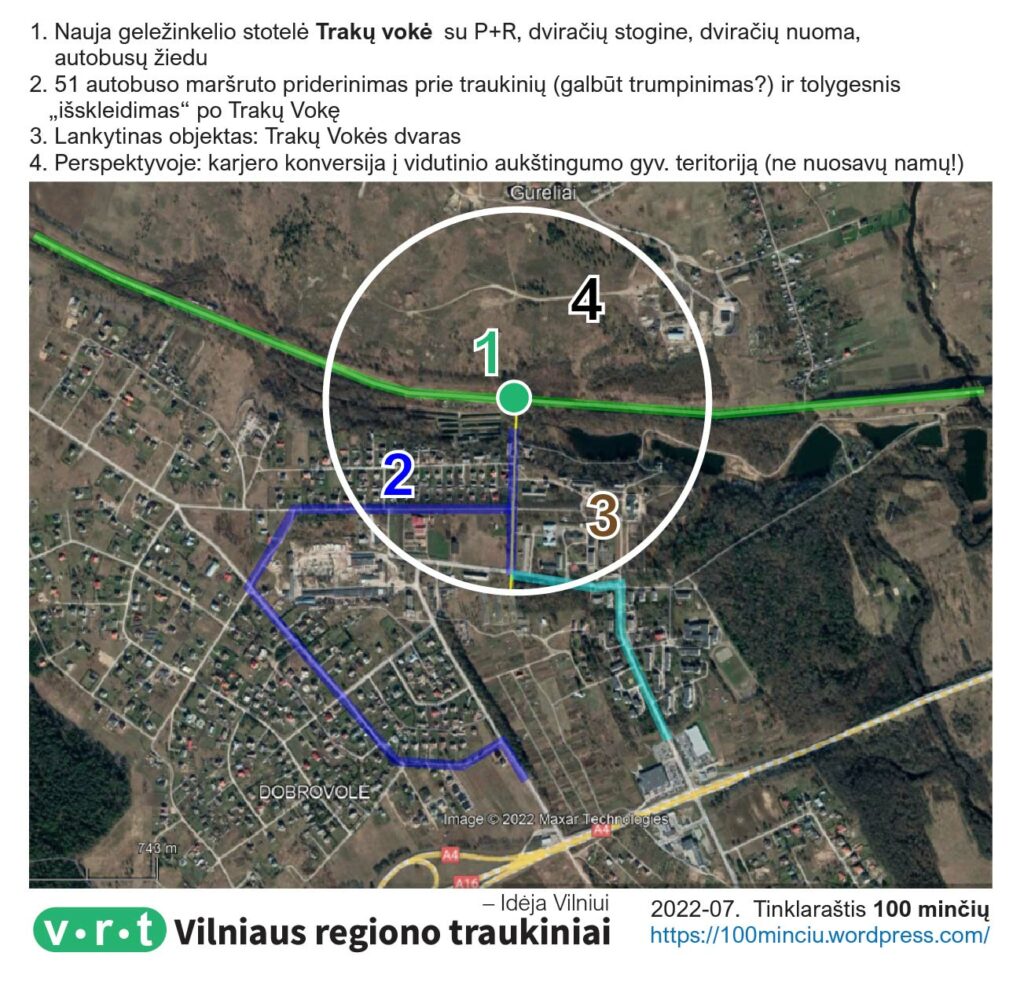
By tying up bus routes near train stops, buses will be used even more efficiently than now. After all, currently people from the center are forced to travel considerable distances by bus, the routes are long, with many traffic lights, with transfers... After the implementation of the project of this article, the role of the "long carrier" will be played by the train, and the bus routes in the suburbs will play the role of transportation, maybe even some buses will be freed up (because routes will be shortened). Passenger comfort will increase, driving time will decrease.
1 ch. Conclusions
I hope you haven't fallen asleep after all these suggestions and schemes. To summarize:
1. It is necessary to improve communication by trains comprehensively, single measures will not have a great effect.
2. After implementing the project, a number of promising places in the city will appear, which will have very good connections: Žariju Street station area, Žemieji Paneriai, Vilkpėdė and Naujininkai (Vilnius Connect) etc. Incentives for more intensive development, conversion of industrial areas, and urban densification will appear in these places. New railway stations could provide a certain structure to the existing and future suburbs of Vilnius, where development is now chaotic.
3. Commuter trains in some parts of the city travel time by public transport would be reduced even by 2-3 times (e.g. in Grigiškės or Ž. Paneris) and would create a direct connection with the center of Vilnius and other cities, which did not exist until now.
4. New railway stations installed at intersections with the existing VT network, would create new interchanges that would shorten the travel time for many passengers (e.g. Vilkpėdes station creates a faster VT connection from Naujamiestis to Lentvaris, Trakus, Kaunas).
5. Suburban trains are not only a project for the convenience of passengers, but also a project that directs the development of the entire region in a healthy direction. Convenient train accessibility encourages city/regional development along the railway, while new developments near stations increase the popularity of trains. It's a vicious cycle (in a positive way!) with high-powered VT lines and urban intensification along them supporting each other. This is sustainable development.
Over time, suburban train systems become more and more popular: for example, Munich S-Bahn the system, which turns 50 this year, now carries 3 times more passengers in its central section than originally planned!
6. If Vilnius continues to turn its back on the railway, serious opportunities for sustainable development will be lost.
Author: 100 thoughts

